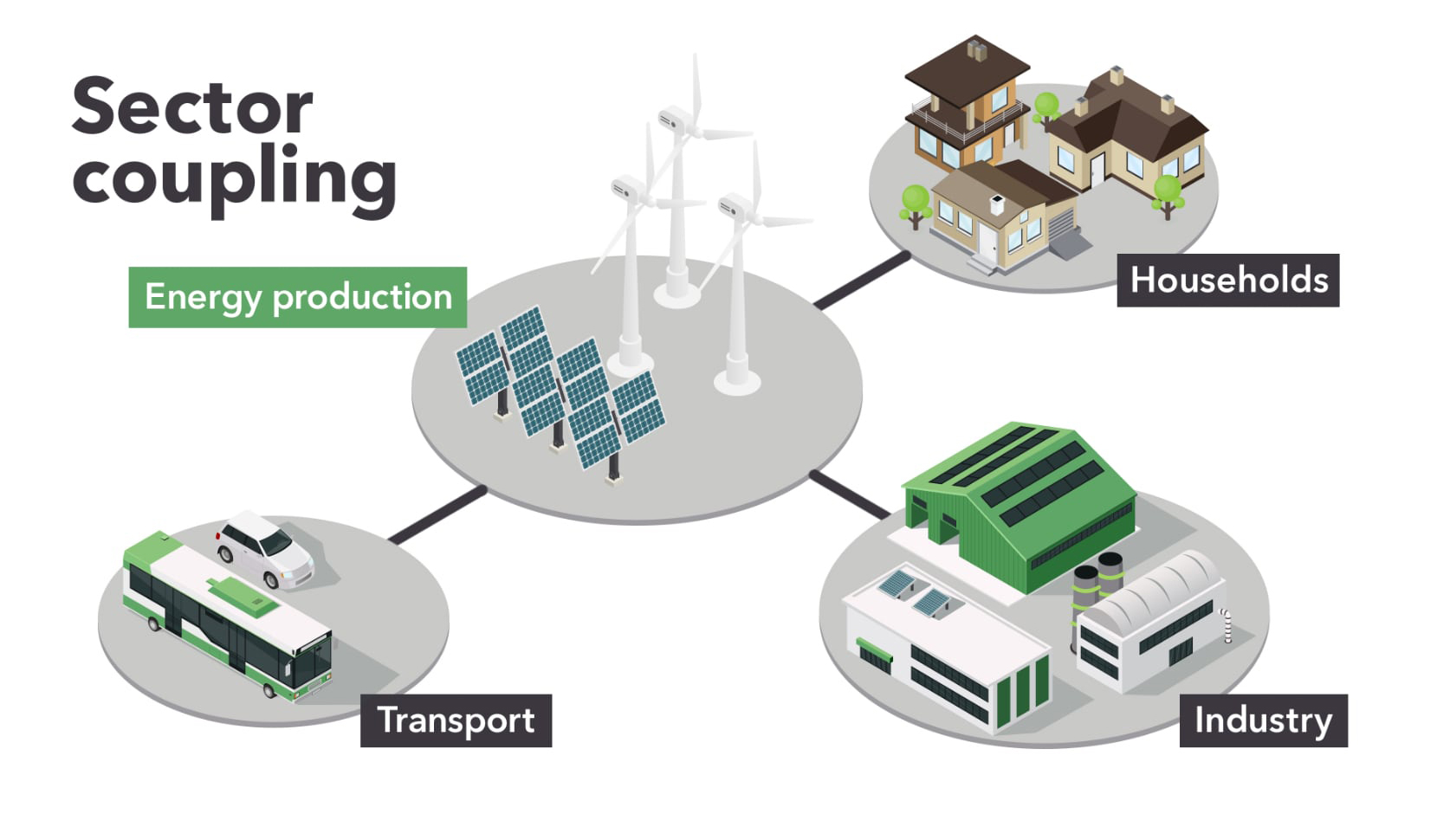
Across the world governments are actively engaged in reducing carbon emissions and seeking alternatives to fossil fuels to meet our daily energy needs. The use of hydrogen to replace carbon-based fuels has significant advantages both globally and locally: by reducing climate-damaging carbon emissions; and by improving local air quality in urban areas by cutting out the emission of particulate matter and NOx gases.
The production of the Hydrogen needed to fuel this global decarbonisation also has an environmentally positive option. Currently much of the world’s hydrogen production is a by-product of industrial processes, which consume fossil fuels. But the EU, for example, has a target to cut carbon emissions by 95% by 2050. One important solution to creating emissions-free fuel will be ‘Green’ hydrogen, which is produced from sustainable sources such as wind farms and solar installations.
Sector coupling: what is it?
The four main sectors where carbon consumption has to be reduced are: energy production; industry; transport and heating. ‘Sector coupling’ describes an integrated approach whereby renewable energy production is transferred among these sectors efficiently. This integrated approach is needed to get the best out of hydrogen’s potential, enabling the transfer of energy from one sector to another, and enabling the complete decarbonization of these key sectors.
As an example, to integrate renewables fully it is possible to convert electricity from wind, solar and hydro farms into hydrogen gas using an electrolysis process. Water is split into hydrogen and oxygen using electricity. This hydrogen gas can then be safely stored in high-pressure storage tanks such as the range produced by NPROXX, transported to refueling stations and used to power private vehicles, city buses or heavy-duty vehicles. This example highlights how hydrogen can efficiently capture and transfer energy from one sector to another.
There are many other areas where hydrogen can be used to replace fossil fuels. Recently new technological developments have enabled ‘net zero’ emissions to become a possibility for the maritime sector. Many countries are pursuing this goal. For example, the world’s first ocean going hydrogen ferry is currently being built in Scotland to allow climate-neutral transport of 120 passengers and 18 vehicles to the Orkney Islands. In sea- and river-port cities, the use of hydrogen for shore-side power supply of ships will play a more and more significant role. All of these technological advances will require a ‘sector coupling’ approach in future.
Read the most up to date Fuel Cell and Hydrogen Industry news at FuelCellsWorks




